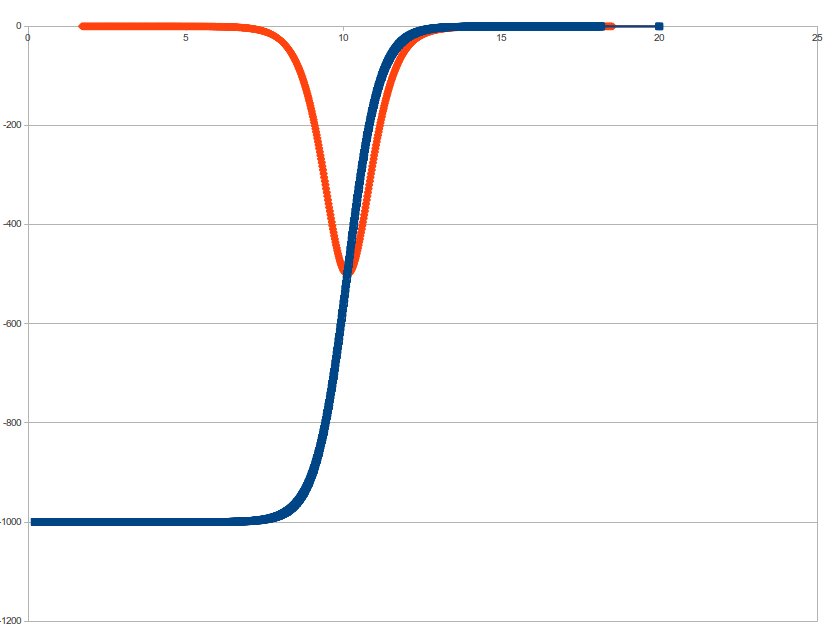Dear LAMMPS users,
I was wondering whether I am doing something wrong; my aim was to tabulate a pair style such that it looks like a near square well, however, when I look at my output results, something seems to go wrong as the potential is not "trapping" the particle as one would expect.
I am sure I have overlooked something important, and hope that someone could point out what is going wrong here.
I am attaching files for your convenience, thank you very much for your time.
With best wishes,
Anna
square_well_50.dump (193 KB)
tanh_potential_50.tab (91.4 KB)
cylinder.dat (1.34 KB)
cylinder_harmonic.in (1.23 KB)
tanh_potential_50.table (2.88 KB)
anna,
i currently don't have the time to look into this in detail,
but a few comment, that may be helpful.
with as steep a potential as you have, you can run into
problem when using finite time steps. note that the atoms
will not experience the potential continuously, but only
at discrete steps. your atom may not incur enough backward
force and thus "escape". you can test this by making the
barrier flatter. and see, if that captures the particle.
in general, what you have is more like a hard sphere interaction
and those require a different treatment to get the interactions right.
what you do it that you back track the coordinates at the previous
step and then compute the reflection at the point where the particles
collided. the granular potentials do something similar. the main
difference is that you have two reflection points.
the second thing that you may need to check out is the
barrier height. perhaps it is not high enough to contain the
particles. again, it is easily tested.
what you may want to try out to compare is using the
gauss/cut potential. this is usually intended to model
the opposite shape (a gaussian shell around a sphere
where atoms are expelled), but by reversing the sign
of the interaction energy, you should be able to build
a (gaussian shaped) trap. while that is not exactly what
you want, but you can use it as a coarse approximation
and for the purpose of comparing height and width of
your tabulated potential, and whether the tabulation
works as expected.
cheers,
axel.
Thank you very much Axel! I will try the suggestions you mention in your email, thanks a lot for your support!
With best wishes, Anna
Dear Axel and LAMMPS developers,
One of the things I did now is just to look at tabulated LJ potential which should perform the function of an attractive well, and is not as sharp as the potential before. However, even with this, the fact that there is a potential is actually not felt anywhere when I analyse my data. I am assuming that something is going wrong when I build my tables, but actually, when I print out the output using the pair_write command, I cannot detect any problems with that...
Also, I have now tried changing the initial potential (please find files attached), and still, even with this extreme potential well depth, this does not do what i would like it to do; in the jpeg file attached, the potential is shown in blue and the associated force in orange. Do you think the potential is still too steep in this case or can it be that something else is going wrong in my data and input files?
Thank you for your time again; I will follow your previous instructions and see whether I can solve the problem.
With best wishes,
Anna
d_1000_w_1_n.tab (187 KB)
cylinder.dat (1.34 KB)
cylinder_harmonic.in (1.21 KB)

dear anna,
i finally had some time to properly look at
your files and the solution to this puzzle is
rather simple and a bit embarrassing:
your data file defines a bond between atoms 1 and 2.
even though your bond style defaults to type "none"
this automatically triggers the computation of
exclusions with the default special_bonds setting.
in other words: the potential between the atoms is
never computed. just add special_bonds lj/coul 1.0 1.0 1.0
to your input and you'll see (and run into the next problem).
cheers,
axel.
